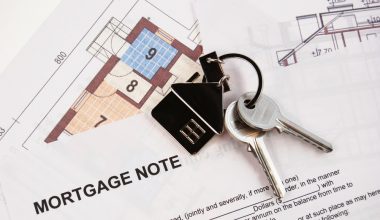A no-closing cost mortgage, also known as a zero-closing cost mortgage, is one in which your lender pays for your closing costs to finalize your property purchase. However, you should anticipate paying a higher interest rate on your loan in exchange.
Given that closing costs can be significant, a no-closing-cost mortgage loan is one option to purchase your ideal home, but it will cost you more in the long term. Here’s a breakdown of this mortgage package so you can decide if it’s the best option for you.
What is a No-closing Cost Mortgage?
A no-closing-cost mortgage, often known as a no-closing-cost refinance, is not exactly what it sounds like. There are still closing costs to consider. You simply do not pay them directly.
The lender covers some or all of your closing costs with a no-closing-cost mortgage. You pay a higher interest rate in exchange. In the long run, the lender’s greater earnings from your higher rate repay your closing costs.
Lenders can usually cover some or all of your closing costs, such as loan origination fees, appraisal fees, title search and title insurance fees, and prepaid taxes and insurance.
What are Closing Costs?
Closing costs are the fees paid when you complete the purchase of a home or other property. These include, if applicable, application expenses, attorney’s fees, and discount points. Closing costs can surpass 15% of a property’s purchase price when real estate sales commissions and taxes are factored in.
Closing costs should range between 2% and 5% of the purchase price of your home. If you additionally need mortgage insurance, your costs may be significantly greater.
What Is the Process of No-Closing-Cost Mortgages?
To be clear, a no-closing-cost mortgage loan does not eliminate the need to pay closing costs. As you may expect, lenders will eventually figure out how to make sure you pay for everything. In this situation, the closing costs are rolled into bigger monthly payments with interest for the duration of your loan.
So, while you don’t have to put up as much money upfront, the amount you pay over time will be comparable to, if not more than, a standard mortgage. In reality, it’s likely to be higher, because the increase in interest is sometimes greater than the initial savings from not paying closing costs upfront.
Furthermore, lenders may include a prepayment penalty provision in the loan to dissuade you from refinancing before they’ve recouped their costs. Do the arithmetic to see what makes the most sense, but in most circumstances, paying your closing costs early saves you money in the long run. There are no prepayment penalties with Rocket Mortgage®.
Different Types of No-closing-cost Mortgages
Depending on the lender, a no-closing-cost mortgage loan may be referred to as:
- A mortgage with no interest
- A no-fee mortgage
- Credits from lenders
- Pricing with a rebate
- Lender-paid closing costs
All of these names allude to the same arrangement, in which you will pay a higher interest rate to cover the lender’s closing costs. Don’t be misled by a lender’s wording into believing that your loan has no closing costs. It still happens; you’re simply not paying them in advance.
How Much Do Closing Costs Typically Cost?
Closing costs can be substantial, ranging from 2% to 5% of the loan amount. It may be useful to assess closing costs for your specific situation.
Consider that on a $250,000 home, you could pay anywhere between $5,000 and $12,500 at the loan settlement table. Closing costs vary greatly based on your region and scenario.
Examples of No-Closing Cost mortgages
For example, utilizing a no-closing-cost mortgage loan, your various rate and charge options would look like this:
- 5% interest rate: The borrower is responsible for all closing costs, including lender fees, third-party fees, and prepayment costs.
- 5.125% rate: The borrower pays no lender fees, but does pay third-party costs and prepaid costs.
- 5.5% interest rate: The borrower pays no lender or third-party fees, only prepaid costs at a rate of 5.5%.
- 5.625% interest rate: The borrower pays nothing out of pocket.
None of these alternatives are excellent or terrible. Borrowers should recognize that lower rates cost more ahead, while higher rates cost less upfront.
“As a general rule of thumb,” says Jon Meyer, The Mortgage Reports loan expert and licensed MLO, “the arrangement should lower your monthly payment to the point where you enjoy enough savings for the refi, even at no cost, to make sense for you.”
To cover your closing costs, lenders raise your interest rate and use the extra profit from the loan to cover your costs. It is up to you to choose if the upfront savings outweigh the increased interest rate and payment.
Is it possible to buy a house with no closing costs?
Not at all. Closing costs must be paid in one manner or another. You must decide whether to pay them in cash when you sign your loan or as an additional expense in each monthly mortgage payment.
However, there are alternatives to lower your closing costs, including eliminating and negotiating loan fees and third-party charges like appraisal and title search. You may also be eligible for closing cost help or housing grants through your state’s first-time home purchase program. Many of these incentives are effectively free money, which means they don’t have to be repaid unless you sell or refinance your house.
Furthermore, if you have a military connection, VA loans have a restriction on acceptable closing costs and do not demand the most expensive closing cost of all: a down payment.
How to Get a No Closing Cost Mortgage
Lenders, like other mortgage options, have varying offerings and minimum qualification standards.
When applying for a no-closing-cost mortgage, the financial institution will consider your:
- Credit rating
- History of credit
- Work experience
- Financial information
It is critical to evaluate how clear lenders are about their terms and conditions while investigating lenders and inquiring about no closing cost mortgages. You want a lender who is open and honest about all aspects of your loan, including closing costs.
Other Alternatives
If you determine that a no-closing-cost mortgage is not for you, there are alternative options for lowering your upfront costs.
You may be able to negotiate with your lender to get some costs eliminated or decreased. This will offer you an idea of your possibilities and how you might cut your initial costs.
Another alternative is to request a contribution from the seller. Some sellers may agree to assist by covering a percentage of the closing costs, depending on how badly they want the deal to go through.
HFA Loans
Another low-cost mortgage option is financial aid from your state’s Housing Finance Agency (HFA), which is frequently offered in collaboration with a local lender. HFA homeownership programs vary by state, but all aim to promote homeownership and increase mortgage affordability for first-time homebuyers and low- and moderate-income households.
HFAs offer first-lien mortgage programs for qualified borrowers with low down payments and low-interest rates, as well as down payment and closing cost assistance. HFAs purchase these loans from lenders once they are made.
Additional HFA Homeownership Programs
These programs include low-interest, low (or no) down payment mortgage products, as well as down payment and closing cost assistance.
Down payment and closing cost assistance HFAs will provide you with a grant or a second mortgage loan to support your down payment and/or closing costs. The majority of HFAs require these downpayment assistance schemes to be used in conjunction with an HFA loan.
The Benefits and Drawbacks of No-Closing-Cost Mortgages
A no-closing-cost mortgage has advantages and disadvantages, just like any other form of loan. Let’s look at some of the advantages and disadvantages so you can make the best decision.
Pros of a No-Closing-Cost Mortgage
Fewer upfront fees can help alleviate the financial stress of purchasing a new house. Owners who are first-time home buyers and short-term residents are likely to gain from this. First-time home purchasers sometimes have more difficulty coming up with finances at the start of the process, and people who only plan on staying in a property for a short period of time will not benefit from cheaper interest over the term of a standard mortgage.
With a lower initial payment, you will reach your “breakeven” threshold sooner.
If you don’t have to pay the upfront closing costs, you may be able to afford a larger down payment.
Cons of a No-Closing-Cost Mortgage
It may be more expensive in the long run (especially for those planning to stay in their new house for an extended loan of time) due to increased mortgage origination fees and interest rates.
When compared to a loan where closing costs are paid upfront, the monthly payments are higher.
If your lender chooses to wrap your closing costs into your mortgage, you may have a larger loan.
Who Provides No-cost Mortgage?
Lenders differ in practically every facet of what they offer and who they will offer it to, and no-closing-cost mortgages are no exception. When considering whether to lend money to a borrower, lenders will consider a variety of variables such as credit score, credit history, job, and much more. When researching lenders and inquiring about no-closing-cost mortgages, look for openness and service level.
Are there any other Options for Obtaining a Low-cost Mortgage?
If you believe that a no-closing-cost mortgage is not the best option for you, there are other ways to save on the upfront costs and ensure that you get a low-closing-cost mortgage.
You might attempt bargaining with your lender because some costs can be waived or decreased. Speaking with your lender will help you understand your options and possibly find a method to lower upfront costs. Many towns and states also provide programs for first-time home buyers to aid with down payments and closing costs.
Another alternative is to request that the seller pay your closing costs. Depending on the circumstances, some sellers may offer to assist by covering a cost of the closing costs.
Can you include closing costs in your mortgage?
In a nutshell, you can roll closing costs into your mortgage, but not all lenders do, and the restrictions vary based on the type of mortgage you acquire. If you choose to roll your closing costs into your mortgage, you will be required to pay interest on those costs during the term of your loan. This effectively means that you will spend far more on these costs than you would if you paid for them beforehand.
No Closing Cost Refinancing
A no-closing-cost refinance can be advantageous since it eliminates the one major disadvantage of refinancing: the upfront cost.
However, for this to work, your new interest rate must still be low enough to save you money over the life of your loan.
A higher interest rate means a larger monthly payment and a higher overall cost. So, before you use a no-cost refinance, run the figures and determine:
- Will your monthly payments be reduced even if you choose the no-closing-cost mortgage rate?
- How long do you intend to keep the mortgage before relocating or refinancing?
- How much more interest will you have paid by the time you sell or refinance? Is this sum greater or less than paying closing costs in advance?
Conclusion
A no-closing-cost mortgage may appear to be an incredible deal at first glance, but closer inspection exposes significant drawbacks. For starters, closing costs do not disappear; they are simply recovered in the future. Calculate the figures. See how much the offer will cost and how much money you will save each month. This will assist you in making the greatest financial option for your circumstances.
No Closing Cost Mortgage FAQs
Who offers a no-closing-cost mortgage?
Even though closing fees still exist, many lenders offer no-closing-cost home loans and refinance loans. In exchange for a higher mortgage rate, these lenders will pay your closing costs. Before agreeing to this type of mortgage, weigh the additional long-term costs against your short-term savings. If you can, you may find that paying closing costs out of pocket saves you more money.
Can I roll closing costs into my mortgage?
Closing costs can be rolled into your loan amount only if you refinance, not if you buy a new home. Even if you refinance, you will be constrained by your lender’s loan-to-value (LTV) requirements. For example, if you own a $200,000 home but can only borrow 80% LTV, your loan cannot exceed $160,000. If you owe $160,000 on your current mortgage, there would be no room for closing costs in the new loan. If you get a cash-out to refinance, you could use some of the money to pay for closing costs.
Related Articles
- CASH TO CLOSE: Understanding & Calculating Cash to Close
- LENDER CREDIT: Definition& How It Works
- How Much Does It Cost To Refinance Mortgage In 2022
- Secondary Mortgage Market: Step By Step Guide On How It Works
- SECOND MORTGAGE: Definition, Rates, and Requirements






